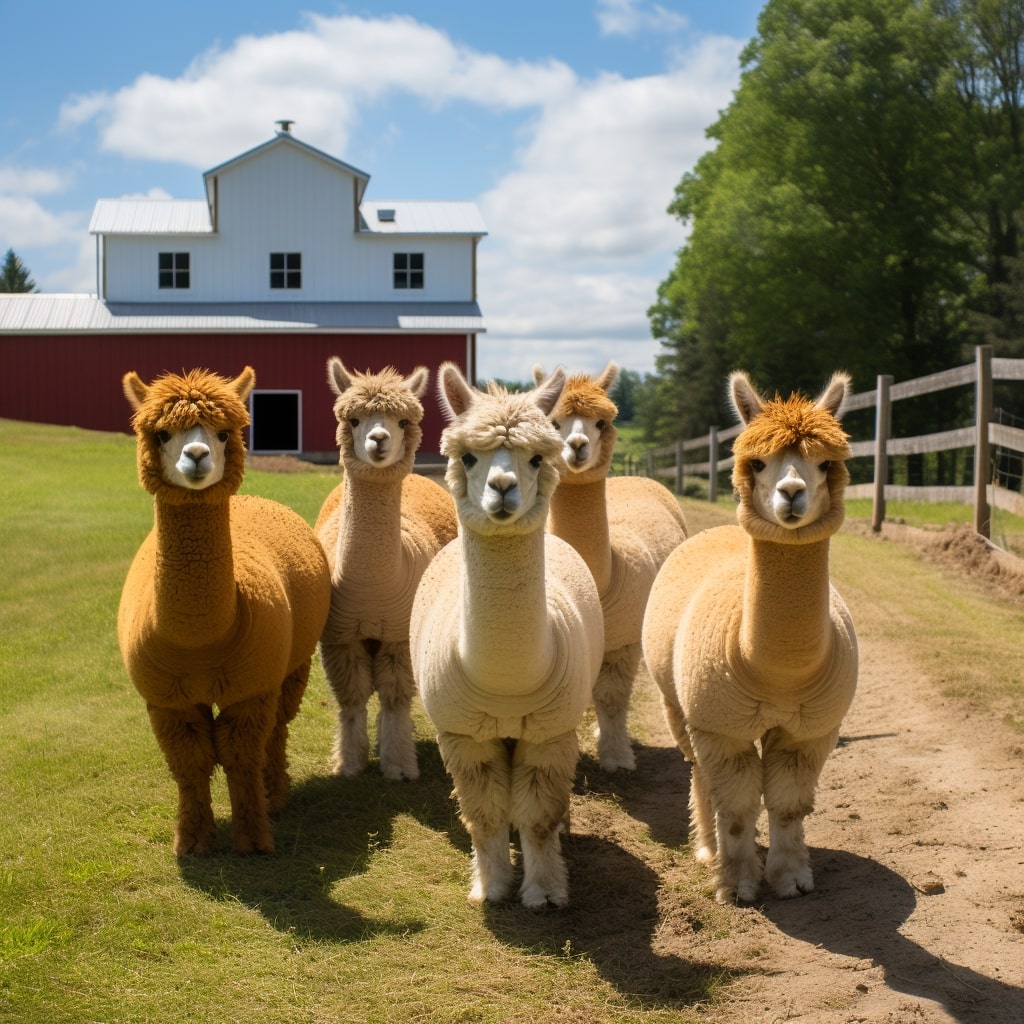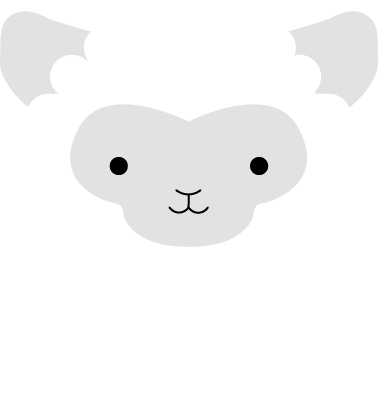The paddock is the enclosure for alpacas. Normally, alpacas do not attempt to jump or escape, so fences 1.2 meters high are sufficient (standard fences for sheep). The paddock can be made of wood or various types of plain wire. Barbed wire should be avoided to prevent injuries.
Indice
- 1 What to consider when setting up the first alpaca paddock
- 2 How much land do alpacas need?
- 3 What to do if you buy or acquire a new paddock
- 4 Should paddock land be rested?
- 5 Should paddock grass be cut?
- 6 Do alpacas need food other than grass?
- 7 Can alpacas graze with other animals?
- 8 Poisonous plants for alpacas
What to consider when setting up the first alpaca paddock
What to consider when setting up the first alpaca paddock
- Stocking density
- Paddock rotation
- Ease of handling
- Placement of shelters
- Feed and water access
- Access for machinery
Paddocks may include shelters for bad weather or intense heat to provide alpacas with protection. Alpacas do not need stables like horses, for example; they only require well-made shelters with about 2.5 meters x 2.5 meters of space per animal. If a more stable-like solution for alpacas is chosen, structures can be specially built for alpaca farming.
How much land do alpacas need?
Approximately 4000 square meters of land are needed for every 5 alpacas. This value varies depending on the quality of the grass; if it is high, it might be able to accommodate an additional alpaca, but if it is of lower quantity or quality, it may be necessary to reduce the herd size or increase the available pasture.
What to do if you buy or acquire a new paddock
Quando si acquista un nuovo paddock è necessario svolgere alcune attività preliminari prima di inserire la mandria di alpaca:
- Ensure that boundary fences are secure
- Check that the water supply is adequate
- Ensure reasonable access to the paddock and that vehicles can access it if necessary
- Check what animals have been on the land previously (there could be a worm burden or disease – in this case, it would be wise to let the land rest for at least 8 weeks)
- Controllare il terreno per le piante velenose

Should paddock land be rested?
Yes, it is highly recommended to rest the land of paddocks through rotation cycles. The pasture area should be divided in two, so that one half can rest while the other feeds the herd. Ideally, rotation should occur every 6-8 weeks depending on the grass consumption by the animals and the land’s response. This rotation process helps to reduce the parasite load, worm presence, and allows the grass to regrow and recover through rest, replenishing the nutrients necessary for healthy nutrition.
Should paddock grass be cut?
While tall grass allows for more alpacas in the paddock, it is also true that if the grass is too tall, alpacas may have difficulty feeding, causing severe disturbances in the animals. Therefore, it is important that the grass should be regulated according to needs, cut when it becomes too tall. It is important to remove brambles, chestnuts, and thistles to avoid them getting tangled in the alpacas’ fleece, causing irritation and making the fleece unusable after shearing.
Do alpacas need food other than grass?
Adequate paddock alone is not enough to ensure that alpacas get all the nutrients and vitamins they need to stay in perfect health. It is necessary to provide hay (roughage) for alpacas to support the grass in the paddock. There are also feeds and other supplements to provide for proper alpaca nutrition.
Can alpacas graze with other animals?
Alpacas are curious animals and do not create problems related to living with other animals, but the difficulties involve how other animals behave with them and what diseases or parasites they can transmit to them. Alpacas graze well with chickens and sheep, although sheep can tolerate much higher worm loads compared to alpacas, so if a mixed grazing is decided, it is necessary to constantly monitor this load. Grazing with horses and donkeys is not recommended as they could injure the alpacas through kicks.
Poisonous plants for alpacas
When setting up or purchasing a paddock, it is very important for the health of the animals to consider the presence of poisonous plants for alpacas. Plants that are dangerous for alpacas include (mainly):
- Foxglove
- Ragwort
- Bracken fern
- Rhododendrons
- Daffodils
- Rye grass
- Laburnum
- Hemlock
- Marshmallow
- Rhubarb
- Bryony
- Black and white bryony
- Grass clippings
- Poppy
- Potato
- Oak
- Privet
